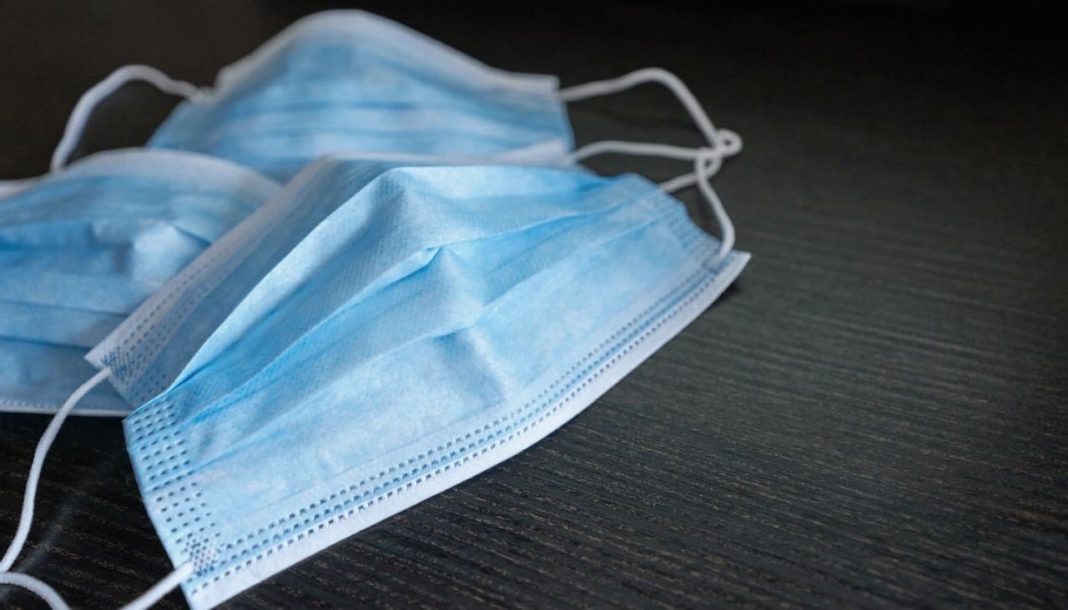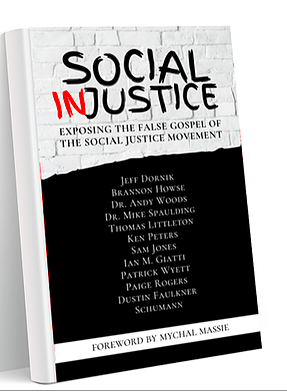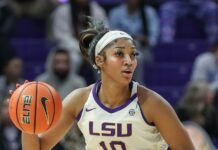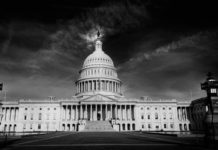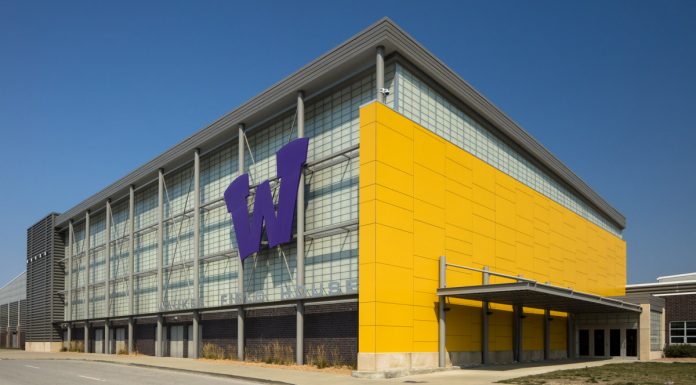1Timothy 6:20 O Timothy, keep that which is committed to thy trust, avoiding profane and vain babblings, and oppositions of science falsely so called.
Do masks really work to slow the spread of COVID? This is the question I will be exploring today. In truth if you are reading this, chances are, you already have your mind made up as either an anti-masker or pro-masker, and no doubt if this gets shared on Facebook or Twitter it will be “fact-checked”. With all of that said, I am not opposed to genuine push back with this article, but don’t expect a response if you choose to emote instead of reason.
Let’s look at some of the studies that have been done on masks and compare them.
The CDC has five studies cited on their website specifically dealing with the “real-world” effectiveness of community masking. Let’s look at what is listed, and I will give a little commentary after each of them.
- An investigation of a high-exposure event, in which 2 symptomatically ill hair stylists interacted for an average of 15 minutes with each of 139 clients during an 8-day period, found that none of the 67 clients who subsequently consented to an interview and testing developed infection. The stylists and all clients universally wore masks in the salon as required by local ordinance and company policy at the time.[i]
This is an absolutely silly study. First, they are not comparing a hairstylist wearing a mask to one who isn’t, they are both wearing masks. This means the study can at best be inconclusive. Secondly, the numbers are so insignificant it would be reckless to draw a conclusion. Less than half of the clients even consented to being tested, there is so little data in this “study” that I am embarrassed the CDC would even post it, let alone first!
- In a study of 124 Beijing households with > 1 laboratory-confirmed case of SARS-CoV-2 infection, mask use by the index patient and family contacts before the index patient developed symptoms reduced secondary transmission within the households by 79%.[ii]
This study was also a relatively small study (124 households/335 people), over a month’s time. I need to correct the CDC here as the study doesn’t say “reduced secondary transmission within the households by 79%” it actually says, “Face mask use by the primary case and family contacts before the primary case developed symptoms was 79% effective in reducing transmission.” There is a big difference between reducing transmission by 79% and being 79% effective in reducing transmission. The CDC is saying transmission is reduced by 79% the study is actually saying it is reduced 79% of the time, but it doesn’t state how much it is reduced by. This is important to note because we will look at a study that is much larger and would actually be compatible with this study, but the CDC refuses to acknowledge it.
Further, this study shows that cleaning with bleach and close contact within the family are also significant factors in stopping the spread of COVID.
- A retrospective case-control study from Thailand documented that, among more than 1,000 persons interviewed as part of contact tracing investigations, those who reported having always worn a mask during high-risk exposures experienced a greater than 70% reduced risk of acquiring infection compared with persons who did not wear masks under these circumstances.[iii]
This was a study done of 1,050 people in Thailand. The study notes, “We found the type of mask worn was not independently associated with infection and that contacts who always wore masks were more likely to practice social distancing. Maintaining >1 m distance from a person with COVID-19, having close contact for <15 minutes, and frequent handwashing were independently associated with lower risk for infection.” Simple logic would dictate that certain masks are better than others, so it is interesting that the type of mask worn didn’t impact the study. Due to this revelation it would seem that what is actually reducing the transition rate is washing your hands and not being in close contact with those who have COVID for more than 15min. It seems the study more rightly is finding the level of hygiene of a person who wears a mask in Thailand than it does the actual effectiveness of masks.
- A study of an outbreak aboard the USS Theodore Roosevelt, an environment notable for congregate living quarters and close working environments, found that use of face coverings on-board was associated with a 70% reduced risk.[iv]
I believe the CDC is getting the 70% mark by comparing the outbreaks on this aircraft carrier with outbreaks among “older adults” (i.e. nursing homes). The actual statistics given in this study of 382 people are: “Service members who reported taking preventive measures had a lower infection rate than did those who did not report taking these measures (e.g., wearing a face covering, 55.8% versus 80.8%; avoiding common areas, 53.8% versus 67.5%; and observing social distancing, 54.7% versus 70.0%, respectively).” This study is once again a very small sample size and it is in a very strange environment that leaves questions if it is compatible to “real-world effectiveness.”
- Investigations involving infected passengers aboard flights longer than 10 hours strongly suggest that masking prevented in-flight transmissions, as demonstrated by the absence of infection developing in other passengers and crew in the 14 days following exposure.[v] [vi]
The first study concludes with this statement, “Studies of airplane transmission are commonly biased by contacts sharing exposure risks before boarding the aircraft. In our investigation, transmission may have been mitigated by mild symptoms and masking during the flight. However, the lack of secondary cases after prolonged air travel exposure supports droplet transmission, not airborne, as the likely route of spread of the COVID-19.” They are not citing masks as being a preventative they are merely making an assertion, but they are more confident that the spread happens through droplet transmission (something handwashing would also help with). Also, the possible airborne spread was one person who became symptomatic but tested negative for COVID.
The second study cites, “Three mass transmission flights without masking are contrasted to 5 with strict masking and 58 cases with zero transmission.” The findings of this study were actually inconclusive, “Limited data dissemination to date, which may be partly related to current economic or political circumstances, has resulted in only a slow return towards a normal volume of commercial flights. The circumstances for robust study have been too few among the disruption of the pandemic to know with precision the risk and factors needed to quantitate transmission under widely varying circumstances.” And “The absence of large numbers of published in-flight transmissions of SARS-CoV-2 is not definitive evidence of safety. All peer-reviewed publications of flights with possible transmission are categorized by the quantity of transmission. Three mass transmission flights without masking are contrasted to 5 with strict masking and 58 cases with zero transmission.” It seems the actual goal was not to contrast masked flights with unmasked flights, but to simply find out if people would be safe from COVID-19 when flying. Their conclusion seems to be that most people didn’t catch COVID on a plane, but air travel has been so irregular they can’t be sure of that.
All of the CDC studies that are cited to “prove” masking are highly suspect due to strange circumstances, small sample sizes, or due to incomplete data. There is one more study we will investigate.
Just over 6,000 people were asked to be part of the study and 4,862 completed the study. 42 of these participants who were instructed to wear masks caught COVID and 53 of those who didn’t wear masks caught COVID. That equaled out to 1.8% who wore masks and 2.1% of those who didn’t. This is the conclusion the study came to:
The recommendation to wear surgical masks to supplement other public health measures did not reduce the SARS-CoV-2 infection rate among wearers by more than 50% in a community with modest infection rates, some degree of social distancing, and uncommon general mask use. The data were compatible with lesser degrees of self-protection.
The findings from this study are that the difference between wearing a mask and not wearing a mask are statistically insignificant. The study also said this:
How SARS-CoV-2 is transmitted—via respiratory droplets, aerosols, or (to a lesser extent) fomites—is not firmly established. Droplets are larger and rapidly fall to the ground, whereas aerosols are smaller (≤5 μm) and may evaporate and remain in the air for hours (39). Transmission of SARS-CoV-2 may take place through multiple routes. It has been argued that for the primary route of SARS-CoV-2 spread—that is, via droplets—face masks would be considered effective, whereas masks would not be effective against spread via aerosols, which might penetrate or circumnavigate a face mask (37, 39). Thus, spread of SARS-CoV-2 via aerosols would at least partially explain the present findings.
This is interesting to consider. How does COVID spread? If it is airborne (aerosol) then masks are not effective. If it is by droplet then they are, but so would proper hygiene like coughing and sneezing into your arm or hand and then washing your hand. Simply put, COVID isn’t that different from other respiratory illnesses in how it spreads, so similar mitigation will do just fine (stay home if you are symptomatic, wash your hands, cough into your arm, etc.). “The present findings are compatible with the findings of a review of randomized controlled trials of the efficacy of face masks for prevention (as personal protective equipment) against influenza virus (18).”
I want to point your attention to one more quote from this study.
Our results suggest that the recommendation to wear a surgical mask when outside the home among others did not reduce, at conventional levels of statistical significance, the incidence of SARS-CoV-2 infection in mask wearers in a setting where social distancing and other public health measures were in effect, mask recommendations were not among those measures, and community use of masks was uncommon.
The Dangers of masks
Masks are not only inconclusive at best when it comes to defending against COVID, but there are actually some risks that often come with masks that we should consider. This is something many people have not even thought about or considered, that there could be negative consequences that come with masks. This is part of the reason why I believe there has been little to no investigation or questioning towards the CDC and the mask studies that they present.
One danger that masks can bring is susceptibility to respiratory infection. Specifically, I am referring to cloth masks, the masks you generally see worn by the general public. One study that was published April 22, 2015 states, “Respiratory infection is much higher among healthcare workers wearing cloth masks compared to medical masks, research shows. Cloth masks should not be used by workers in any healthcare setting, authors of the new study say.” And “The study found respiratory infection was much higher among healthcare workers wearing cloth masks. The penetration of cloth masks by particles was almost 97% compared to medical masks with 44%.”[viii]
This study shows that cloth masks in particular are pointless (they fail on 97% of particles) and even medical masks worn by medical professionals are pretty suspect in their effectiveness (they fail on 44% of particles). But what is interesting is the increased danger cloth masks are to individual wearers. “The authors speculate that the cloth masks’ moisture retention, their reuse and poor filtration may explain the increased risk of infection.” This study was done across 14 hospitals, if those who work in hospitals end up reusing their masks, how much more will the general population? This becomes even more troubling when we consider that COVID fatalities are generally nor from COVID acting alone, but when it is combined with other health risks or complications (like a respiratory infection).
For those who are skeptical on how compounded respiratory complications can severely make a pandemic worse I would ask that you consider the Spanish Flu of 1918. In 1918 an estimated 50 million deaths occurred from this flu, including 675,000 in the United States. It was also estimated that 500 million people were infected by this flu and I will also point out that the world population was only 1.7 billion in 1918.[ix] [x] Simply put, the Spanish Flu was much worse than what COVID has been so far, but the Spanish Flu’s destruction was actually through bacterial pneumonia. “The majority of deaths during the influenza pandemic of 1918-1919 were not caused by the influenza virus acting alone, report researchers from the National Institute of Allergy and Infectious Diseases (NIAID), part of the National Institutes of Health. Instead, most victims succumbed to bacterial pneumonia following influenza virus infection. The pneumonia was caused when bacteria that normally inhabit the nose and throat invaded the lungs along a pathway created when the virus destroyed the cells that line the bronchial tubes and lungs.”[xi]
If masks (particularly cloth masks) increase a person’s probability to get respiratory infections and pandemics become much more deadly when they are mixed with respiratory infections, then we can easily conclude there is a danger to wearing masks. This makes the inconclusive studies on the effectiveness of masks that much more damning.
Another danger of masks that I will just briefly touch on is the aid they give to sex trafficking. There are millions of sex trafficking victims every year and it is estimated that one million children are trafficked every year. Masks can obscure identity, limit communication, and make interactions much more streamlined. All of these give aid to those who traffic children.
What should we do?
The Bible is our greatest textbook for in it contains everything that is needed for life and godliness (2Peter 1:3). Let’s look to the instruction the Bible gave for dealing with a highly transmittable disease that plagued, leprosy. In Leviticus 13-14 we find the laws concerning leprosy and in them we find several key principles with how to deal with easily transmittable diseases. Namely, there should be a quarantining of the symptomatic sick for seven-day periods until they are no longer symptomatic and that clothing that has been infected should either be destroyed or washed. In God’s law we find very practical hygiene practices that served the Jews so well in the 1300’s they were falsely blamed for the Black Death because they were less than other people.
Wash your hands, quarantine if you are symptomatically sick, cough and sneeze into your arm and change/wash the clothes you sneeze and cough on. These are the simple principles we find in God’s word on how to deal with a contagious disease. This is our best chance to survive COVID and to gain herd immunity. God’s word is always to be our primary textbook and source of truth!
[i] Hendrix MJ, Walde C, Findley K, Trotman R. Absence of Apparent Transmission of SARS-CoV-2 from Two Stylists After Exposure at a Hair Salon with a Universal Face Covering Policy – Springfield, Missouri, May 2020. MMWR Morb Mortal Wkly Rep.2020;69(28):930-932.10.15585/mmwr.mm6928e2. https://www.ncbi.nlm.nih.gov/pubmed/32673300external icon.
[ii] Wang Y, Tian H, Zhang L, et al. Reduction of secondary transmission of SARS-CoV-2 in households by face mask use, disinfection and social distancing: a cohort study in Beijing, China. BMJ Glob Health. 2020;5(5).10.1136/bmjgh-2020-002794. https://www.ncbi.nlm.nih.gov/pubmed/32467353external icon
[iii] Doung-Ngern P, Suphanchaimat R, Panjangampatthana A, et al. Case-Control Study of Use of Personal Protective Measures and Risk for Severe Acute Respiratory Syndrome Coronavirus 2 Infection, Thailand. Emerg Infect Dis. 2020;26(11).10.3201/eid2611.203003. https://www.ncbi.nlm.nih.gov/pubmed/32931726external icon
[iv] Payne DC, Smith-Jeffcoat SE, Nowak G, et al. SARS-CoV-2 Infections and Serologic Responses from a Sample of U.S. Navy Service Members – USS Theodore Roosevelt, April 2020. MMWR Morb Mortal Wkly Rep. 2020;69(23):714-721.10.15585/mmwr.mm6923e4. https://www.ncbi.nlm.nih.gov/pubmed/32525850external icon
[v] Schwartz KL, Murti M, Finkelstein M, et al. Lack of COVID-19 transmission on an international flight. Cmaj. 2020;192(15):E410.10.1503/cmaj.75015. https://www.ncbi.nlm.nih.gov/pubmed/32392504external icon
[vi] Freedman DO, Wilder-Smith A. In-flight Transmission of SARS-CoV-2: a review of the attack rates and available data on the efficacy of face masks. J Travel Med. 2020.10.1093/jtm/taaa178. https://www.ncbi.nlm.nih.gov/pubmed/32975554
[vii] https://www.acpjournals.org/doi/10.7326/M20-6817?fbclid=IwAR1ZxIOb2G9068iJWj64ZBa6xJASLwrrO_Z7Ov5qKxk0LpuvaX_PtS0IUjY&
[viii] https://www.sciencedaily.com/releases/2015/04/150422121724.htm
[ix] https://www.cdc.gov/flu/pandemic-resources/1918-pandemic-h1n1.html
[x] https://www.worldometers.info/world-population/world-population-by-year/
[xi] https://www.nih.gov/news-events/news-releases/bacterial-pneumonia-caused-most-deaths-1918-influenza-pandemic


